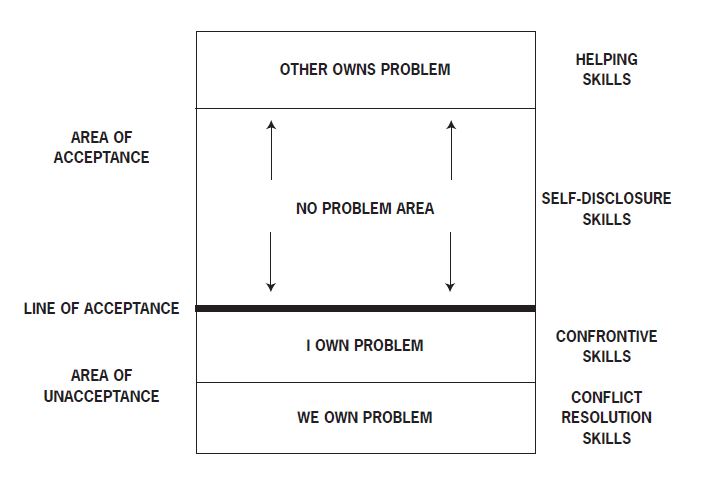Waaaaay back in 1974, there was an article in the Harvard Business Review called, “Management Time: Who’s Got the Monkey?”, by Bill Oncken and Don Wass. (Their article is one of two most requested articles ever in HBR history.)
While the article focuses on time management, the concept of the proverbial “monkey on the back” is often associated with the Gordon Model concept of Problem Ownership, i.e., Whose problem is it?
This is an essential question to ask when navigating the often bumpy roads of relationships, which is where Dr. Thomas Gordon’s Behavior Window comes in—think of the window as your “Relationship GPS”.
An important initial step in applying the Gordon Model is to first answer the question, “Who owns the problem?” and then to select and use the appropriate skill.
The Other Person “Owns” the Problem.
The other’s needs are not being met; they are troubled or distressed. You may want to help the other person, but you do not “own” their problem.
No Problem Area.
These are the times when all the behaviors of the other person are acceptable to you and they are not experiencing a problem. Expanding this area represents the central goal of Gordon Model — to help people build and maintain relationships that are relatively problem-free and where the needs of both are being met.
The skills of Declarative, Responsive and Preventive l-Messages have the purpose of keeping your needs met and keeping your relationships in the No Problem Area.
I “Own” the Problem.
In this case, your needs are not being met; you are feeling troubled, experiencing pain or distress. And the other person is not experiencing a problem. Your posture is not to be a helper but to get your own needs met; to resolve your problem independently or with the help of others.
We “Own” the Problem.
Here the other person and you have a conflict between you. You both own the problem.
So keep your Behavior Window handy and remember these wise words from the creator of the Gordon Model, said so beautifully in his “A Credo for My Relationships”:
“So let us always strive to search for a solution that will be acceptable to both of us. Your needs will be met, and so will mine—neither will lose, both will win.
In this way, you can continue to develop as a person through satisfying your needs, and so can I. Thus, ours can be a healthy relationship in which both of us can strive to become what we are capable of being. And we can continue to relate to each other with mutual respect, love and peace.”

